- Home
- Zadie Smith
Swing Time
Swing Time Read online
By the same author
FICTION
White Teeth
The Autograph Man
On Beauty
NW
NONFICTION
The Book of Other People (editor)
Changing My Mind: Occasional Essays
PENGUIN PRESS
AN IMPRINT OF PENGUIN RANDOM HOUSE LLC
375 Hudson Street
New York, New York 10014
penguin.com
Copyright © 2016 by Zadie Smith
Penguin supports copyright. Copyright fuels creativity, encourages diverse voices, promotes free speech, and creates a vibrant culture. Thank you for buying an authorized edition of this book and for complying with copyright laws by not reproducing, scanning, or distributing any part of it in any form without permission. You are supporting writers and allowing Penguin to continue to publish books for every reader.
LIBRARY OF CONGRESS CATALOGING-IN-PUBLICATION DATA AVAILABLE
ISBN: 978-1-59420-398-5
978-0-73522-247-2 (international edition)
978-0-39956-431-4 (e-book)
This is a work of fiction. Names, characters, places, and incidents either are the product of the author’s imagination or are used fictitiously, and any resemblance to actual persons, living or dead, businesses, companies, events, or locales is entirely coincidental.
Version_1
Contents
Title Page
Copyright
Dedication
Epigraph
Prologue
PART ONE: Early Days One
Two
Three
Four
Five
Six
Seven
Eight
Nine
Ten
Eleven
Twelve
Thirteen
Fourteen
PART TWO: Early and Late One
Two
Three
Four
Five
Six
Seven
PART THREE: Intermission One
Two
Three
Four
PART FOUR: Middle Passage One
Two
Three
Four
Five
Six
Seven
Eight
Nine
Ten
Eleven
Twelve
PART FIVE: Night and Day One
Two
Three
Four
Five
Six
PART SIX: Day and Night One
Two
Three
Four
Five
Six
Seven
PART SEVEN: Late Days One
Two
Three
Four
Five
Six
Seven
Eight
Nine
Ten
Eleven
Epilogue
Acknowledgments
For my mother, Yvonne
When the music changes, so does the dance.
‒ Hausa proverb
Prologue
It was the first day of my humiliation. Put on a plane, sent back home, to England, set up with a temporary rental in St. John’s Wood. The flat was on the eighth floor, the windows looked over the cricket ground. It had been chosen, I think, because of the doorman, who blocked all inquiries. I stayed indoors. The phone on the kitchen wall rang and rang, but I was warned not to answer it and to keep my own phone switched off. I watched the cricket being played, a game I don’t understand, it offered no real distraction, but still it was better than looking at the interior of that apartment, a luxury condo, in which everything had been designed to be perfectly neutral, with all significant corners rounded, like an iPhone. When the cricket finished I stared at the sleek coffee machine embedded in the wall, and at two photos of the Buddha—one a brass Buddha, the other wood—and at a photo of an elephant kneeling next to a little Indian boy, who was also kneeling. The rooms were tasteful and gray, linked by a pristine hallway of tan wool cord. I stared at the ridges in the cord.
Two days passed like that. On the third day, the doorman called up and said the lobby was clear. I looked at my phone, it was sitting on the counter in airplane mode. I had been offline for seventy-two hours and can remember feeling that this should be counted among the great examples of personal stoicism and moral endurance of our times. I put on my jacket and went downstairs. In the lobby I met the doorman. He took the opportunity to complain bitterly (“You’ve no idea what it’s been like down here, past few days—Piccadilly-bloody-Circus!”) although it was clear that he was also conflicted, even a little disappointed: it was a shame for him that the fuss had died down—he had felt very important for forty-eight hours. He told me proudly of telling several people to “buck up their ideas,” of letting such and such a person know that if they thought they were getting past him “they had another think coming.” I leaned against his desk and listened to him talk. I had been out of England long enough that many simple colloquial British phrases now sounded exotic to me, almost nonsensical. I asked him if he thought there would be more people that evening and he said he thought not, there hadn’t been anyone since yesterday. I wanted to know if it was safe to have an overnight visitor. “I don’t see any problem,” he said, with a tone that made me feel my question was ridiculous. “There’s always the back door.” He sighed, and at the same moment a woman stopped to ask him if he could receive her dry cleaning as she was going out. She had a rude, impatient manner and rather than look at him as she spoke she stared at a calendar on his desk, a gray block with a digital screen, which informed whoever was standing in front of it exactly what moment they were in to the second. It was the twenty-fifth of the month of October, in the year two thousand and eight, and the time was twelve thirty-six and twenty-three seconds. I turned to leave; the doorman dealt with the woman and hurried out from behind his desk to open the front door for me. He asked me where I was going; I said I didn’t know. I walked out into the city. It was a perfect autumnal London afternoon, chill but bright, under certain trees there was a shedding of golden leaves. I walked past the cricket ground and the mosque, past Madame Tussauds, up Goodge Street and down Tottenham Court Road, through Trafalgar Square, and found myself finally in Embankment, and then crossing the bridge. I thought—as I often think as I cross that bridge—of two young men, students, who were walking over it very late one night when they were mugged and thrown over the railing, into the Thames. One lived and one died. I’ve never understood how the survivor managed it, in the darkness, in the absolute cold, with the terrible shock and his shoes on. Thinking of him, I kept to the right-hand side of the bridge, by the railway line, and avoided looking at the water. When I reached the South Bank the first thing I saw was a poster advertising an afternoon event with an Austrian film director “in conversation,” it was starting in twenty minutes at the Royal Festival Hall. I decided on a whim to try to get a ticket. I walked over and was able to buy a seat in the gods, in the very back row. I didn’t expect much, I only wanted to be distracted from my own problems for a while, to sit in darkness, and hear a discussion of films I’d never seen, b
ut in the middle of the program the director asked his interviewer to roll a clip from the movie Swing Time, a film I know very well, I only watched it over and over as a child. I sat up tall in my seat. On the huge screen before me Fred Astaire danced with three silhouetted figures. They can’t keep up with him, they begin to lose their rhythm. Finally they throw in the towel, making that very American “oh phooey” gesture with their three left hands, and walking off stage. Astaire danced on alone. I understood all three of the shadows were also Fred Astaire. Had I known that, as a child? No one else paws the air like that, no other dancer bends his knees in quite that way. Meanwhile the director spoke of a theory of his, about “pure cinema,” which he began to define as the “interplay of light and dark, expressed as a kind of rhythm, over time,” but I found this line of thought boring and hard to follow. Behind him the same clip, for some reason, played again, and my feet, in sympathy with the music, tapped at the seat in front of me. I felt a wonderful lightness in my body, a ridiculous happiness, it seemed to come from nowhere. I’d lost my job, a certain version of my life, my privacy, yet all these things felt small and petty next to this joyful sense I had watching the dance, and following its precise rhythms in my own body. I felt I was losing track of my physical location, rising above my body, viewing my life from a very distant point, hovering over it. It reminded me of the way people describe hallucinogenic drug experiences. I saw all my years at once, but they were not piled up on each other, experience after experience, building into something of substance—the opposite. A truth was being revealed to me: that I had always tried to attach myself to the light of other people, that I had never had any light of my own. I experienced myself as a kind of shadow.
When the event was over I walked back through the city to the flat, phoned Lamin, who was waiting in a nearby café, and told him the coast was clear. He’d been fired, too, but instead of letting him go home, to Senegal, I’d brought him here, to London. At eleven o’clock he came round, in a hooded top, in case of cameras. The lobby was clear. In his hood he looked even younger and more beautiful, and it seemed to me to be a kind of scandal that I could find in my heart no real feelings for him. Afterward, we lay side by side in bed with our laptops, and to avoid checking my e-mail I googled, at first aimlessly, and then with an aim: I was looking for that clip from Swing Time. I wanted to show it to Lamin, I was curious to know what he thought of it, as a dancer now himself, but he said he had never seen or heard of Astaire, and as the clip played he sat up in bed and frowned. I hardly understood what we were looking at: Fred Astaire in black face. In the Royal Festival Hall I’d sat in the gods, without my glasses on, and the scene opens with Astaire in long shot. But none of this really explained how I’d managed to block the childhood image from my memory: the rolling eyes, the white gloves, the Bojangles grin. I felt very stupid, closed the laptop and went to sleep. The next morning I woke early, leaving Lamin in bed, hurried to the kitchen and switched on my phone. I expected hundreds of messages, thousands. I had maybe thirty. It had been Aimee who once sent me hundreds of messages a day, and now at last I understood that Aimee would never send me another message again. Why it took me so long to understand this obvious thing I don’t know. I scrolled down a depressing list—a distant cousin, a few friends, several journalists. I spotted one titled: WHORE. It had a nonsense address of numbers and letters and a video attachment that wouldn’t open. The body of the message was a single sentence: Now everyone knows who you really are. It was the kind of note you might get from a spiteful seven-year-old girl with a firm idea of justice. And of course that—if you can ignore the passage of time—is exactly what it was.
PART ONE
Early Days
One
If all the Saturdays of 1982 can be thought of as one day, I met Tracey at ten a.m. on that Saturday, walking through the sandy gravel of a churchyard, each holding our mother’s hand. There were many other girls present but for obvious reasons we noticed each other, the similarities and the differences, as girls will. Our shade of brown was exactly the same—as if one piece of tan material had been cut to make us both—and our freckles gathered in the same areas, we were of the same height. But my face was ponderous and melancholy, with a long, serious nose, and my eyes turned down, as did my mouth. Tracey’s face was perky and round, she looked like a darker Shirley Temple, except her nose was as problematic as mine, I could see that much at once, a ridiculous nose—it went straight up in the air like a little piglet. Cute, but also obscene: her nostrils were on permanent display. On noses you could call it a draw. On hair she won comprehensively. She had spiral curls, they reached to her backside and were gathered into two long plaits, glossy with some kind of oil, tied at their ends with satin yellow bows. Satin yellow bows were a phenomenon unknown to my mother. She pulled my great frizz back in a single cloud, tied with a black band. My mother was a feminist. She wore her hair in a half-inch Afro, her skull was perfectly shaped, she never wore make-up and dressed us both as plainly as possible. Hair is not essential when you look like Nefertiti. She’d no need of make-up or products or jewelry or expensive clothes, and in this way her financial circumstances, her politics and her aesthetic were all perfectly—conveniently—matched. Accessories only cramped her style, including, or so I felt at the time, the horse-faced seven-year-old by her side. Looking across at Tracey I diagnosed the opposite problem: her mother was white, obese, afflicted with acne. She wore her thin blond hair pulled back very tightly in what I knew my mother would call a “Kilburn facelift.” But Tracey’s personal glamour was the solution: she was her own mother’s most striking accessory. The family look, though not to my mother’s taste, I found captivating: logos, tin bangles and hoops, diamanté everything, expensive trainers of the kind my mother refused to recognize as a reality in the world—“Those aren’t shoes.” Despite appearances, though, there was not much to choose between our two families. We were both from the estates, neither of us received benefits. (A matter of pride for my mother, an outrage to Tracey’s: she had tried many times—and failed—to “get on the disability.”) In my mother’s view it was exactly these superficial similarities that lent so much weight to questions of taste. She dressed for a future not yet with us but which she expected to arrive. That’s what her plain white linen trousers were for, her blue-and-white-striped “Breton” T-shirt, her frayed espadrilles, her severe and beautiful African head—everything so plain, so understated, completely out of step with the spirit of the time, and with the place. One day we would “get out of here,” she would complete her studies, become truly radical chic, perhaps even spoken of in the same breath as Angela Davis and Gloria Steinem . . . Straw-soled shoes were all a part of this bold vision, they pointed subtly at the higher concepts. I was an accessory only in the sense that in my very plainness I signified admirable maternal restraint, it being considered bad taste—in the circles to which my mother aspired—to dress your daughter like a little whore. But Tracey was unashamedly her mother’s aspiration and avatar, her only joy, in those thrilling yellow bows, a frou-frou skirt of many ruffles and a crop top revealing inches of childish nut-brown belly, and as we pressed up against the pair of them in this bottleneck of mothers and daughters entering the church I watched with interest as Tracey’s mother pushed the girl in front of herself—and in front of us—using her own body as a means of obstruction, the flesh on her arms swinging as she beat us back, until she arrived in Miss Isabel’s dance class, a look of great pride and anxiety on her face, ready to place her precious cargo into the temporary care of others. My mother’s attitude, by contrast, was one of weary, semi-ironic servitude, she thought the dance class ridiculous, she had better things to do, and after a few further Saturdays—in which she sat slumped in one of the plastic chairs that lined the left-hand wall, hardly able to contain her contempt for the whole exercise—a change was made and my father took over. I waited for Tracey’s father to take over, but he never did. It turned out—as my mother had guessed at once—
that there was no “Tracey’s father,” at least not in the conventional, married sense. This, too, was an example of bad taste.
Two
I want to describe the church now, and Miss Isabel. An unpretentious nineteenth-century building with large sandy stones on the façade, not unlike the cheap cladding you saw in the nastier houses—though it couldn’t have been that—and a satisfying, pointy steeple atop a plain, barn-like interior. It was called St. Christopher’s. It looked just like the church we made with our fingers when we sang:
Here is the church
Here is the steeple
Open the doors
There’s all the people.
The stained glass told the story of St. Christopher carrying the baby Jesus on his shoulders across a river. It was poorly done: the saint looked mutilated, one-armed. The original windows had blown out during the war. Opposite St. Christopher’s stood a high-rise estate of poor reputation, and this was where Tracey lived. (Mine was nicer, low-rise, in the next street.) Built in the sixties, it replaced a row of Victorian houses lost in the same bombing that had damaged the church, but here ended the relationship between the two buildings. The church, unable to tempt residents across the road for God, had made a pragmatic decision to diversify into other areas: a toddlers’ playgroup, ESL, driver training. These were popular, and well established, but Saturday-morning dance classes were a new addition and no one knew quite what to make of them. The class itself cost two pounds fifty, but a maternal rumor went round concerning the going rate for ballet shoes, one woman had heard three pounds, another seven, so-and-so swore the only place you could get them was Freed, in Covent Garden, where they’d take ten quid off you as soon as look at you—and then what about “tap” and what about “modern?” Could ballet shoes be worn for modern? What was modern? There was no one you could ask, no one who’d already done it, you were stuck. It was a rare mother whose curiosity extended to calling the number written on the homemade flyers stapled to the local trees. Many girls who might have made fine dancers never made it across that road, for fear of a homemade flyer.

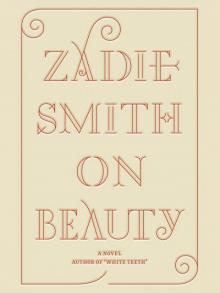 On Beauty
On Beauty Nw
Nw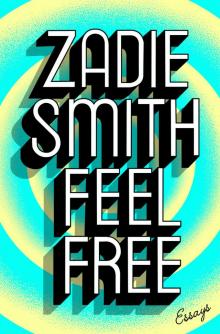 Feel Free: Essays
Feel Free: Essays The Book of Other People
The Book of Other People White Teeth
White Teeth Changing My Mind: Occasional Essays
Changing My Mind: Occasional Essays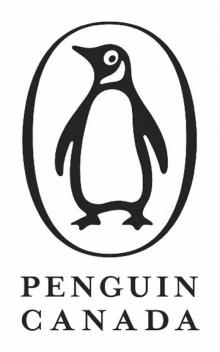 N.W.
N.W. Swing Time
Swing Time The Embassy of Cambodia
The Embassy of Cambodia The Autograph Man
The Autograph Man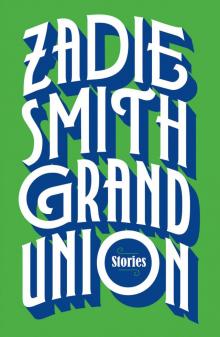 Grand Union
Grand Union Intimations
Intimations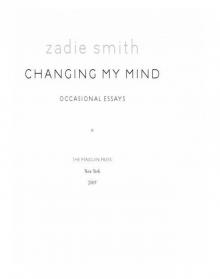 Changing My Mind
Changing My Mind Feel Free
Feel Free NW: A Novel
NW: A Novel